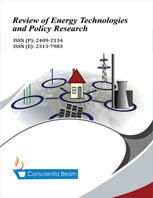The Role of Led’s in Meeting China’s Building Code Requirement of 50% Improved Energy Efficiency
DOI:
https://doi.org/10.18488/journal.77/2014.1.2/77.2.50.55Abstract
China economic development continues to be marred by power shortages, extensive air pollution, and a strained water supply. These problems trace back to China’s dependence on coal for power. At present coal consumption levels China stands in the way of maintaining global temperature increase from greenhouse gases below the 2°C target. Amid reports one-third of global energy end use takes place within buildings, China’s National Energy Commission (NEC) has responded by requiring new buildings are at least 50% more energy efficient than those built in 2005. This research found LED’s reduced overall building power use by approximately 19%. Payback was less than 2 years. In China the legally enforceable, mandatory standard for visual comfort (300 lux) and power density (11 watts/m2) are defined in GB5034-2004. However, since LED’s experienced 28% more lumen decay over useful life than fluorescents, the lighting change resulted in savings only if local government officials permitted tasks lighting at reduced intensity.

